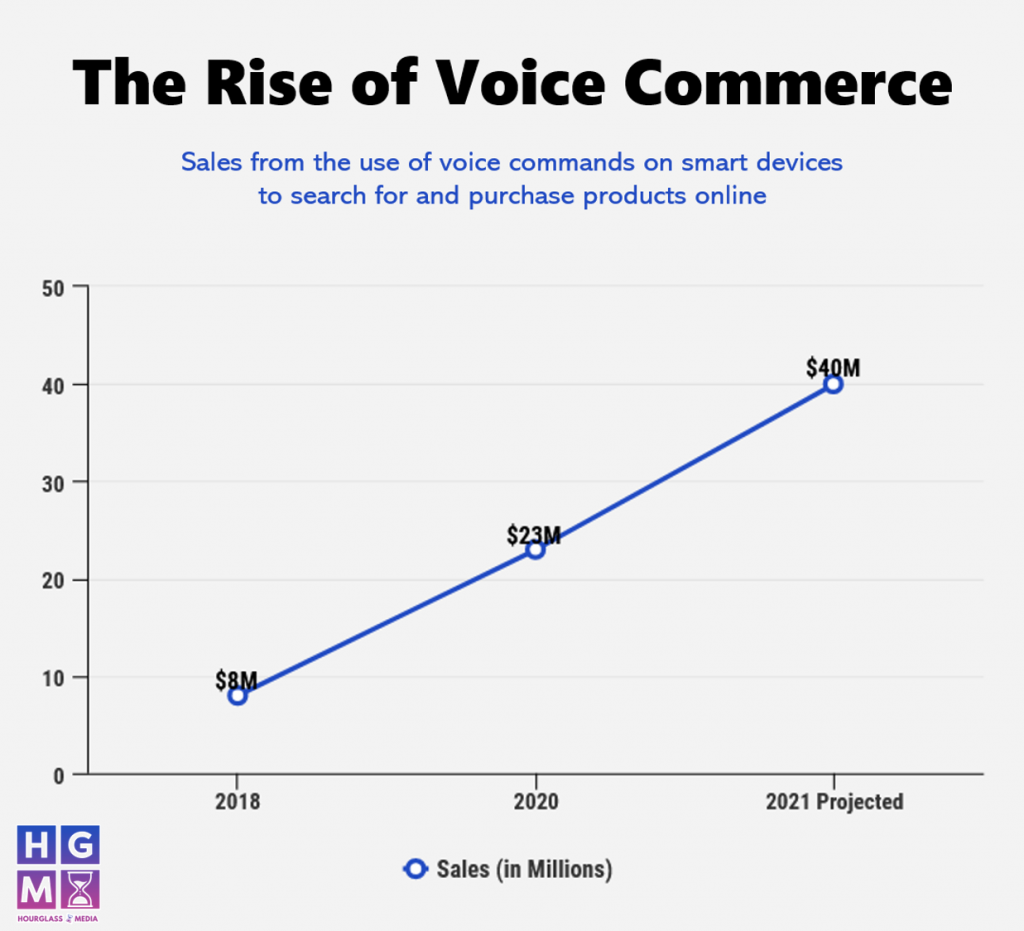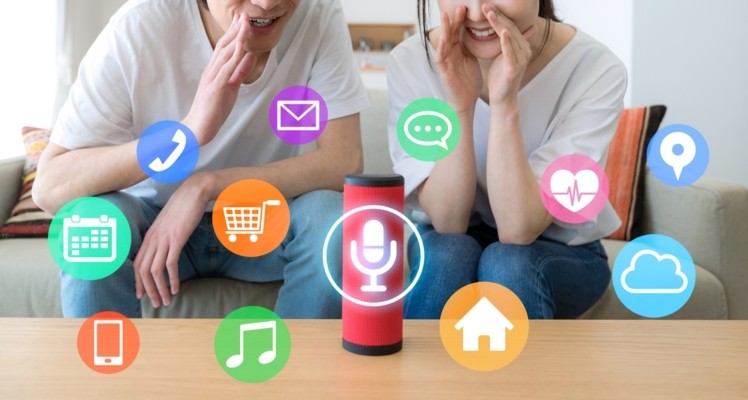How can you use smart speakers as an effective marketing tool?
You may have jumped on the trend and placed a smart speaker in your home when the Amazon Alexa was first introduced in 2014 or the Google Assistant that followed only a couple of years later. Initially, people used them to play music, perform research, set timers, make lists, and other menial jobs. Most people have apps that already perform these functions, so the goal of the evolution of smart speakers was to enrich people’s lives by fulfilling unique functions. Smart speaker marketing targets consumers from ages 25 to 55, with 39.3% of millennials using the services that smart speakers offer.
How do consumers use smart speakers?
Smart speakers have advanced to allow consumers to perform functions on anything from paying their credit card statement to purchasing products. 25% of smart speaker owners use them to order food. They do so on an average of once each week. The primary uses for smart speakers include:
- Playing music
- Weather updates
- Information gathering
- Amusement
- Set alarms
Beyond these minor functions, consumers are beginning to understand and utilize the vast array of functional features that smart speakers can offer, with voice commerce predicted to be worth $40 billion in 2022. The main question that companies should be asking themselves is how they can address the most relevant consumer demands.

What roles can smart speakers play?
As a business, it would behoove you to research where you can gain better leverage with smart speaker users. The leading entry location is in informational queries. Converting an individual’s question about an issue they may be having into a solution is at the heart of all sales. For example, someone may search why their eyes are itchy and sting. Following the logic, they would next ask how they make it stop. This is where an advertiser can insert information about allergy medications.
When adequately engaged, smart speakers can help guide the consumer to the best product or service to fit their situation. Marketers need to consider how they can offer higher-value products and engage consumers more profoundly. The more you get to know your target market, the better your ability to recommend your brand right to their phone or home speaker. Product recommendations can open the flow of conversation. One project based on this idea generated 35% more sales when compared to traditional retail.
How can you optimize your website to allow for smart speaker usage?
Thriving in the business world with ever-changing technology will only occur when you adapt to the landscape. Voice searching started in the industry with smartphone usage but quickly accelerated to smart speakers and voice assistants. With over 26% of homes in the US having one of the varieties of smart speakers, you need to consider how people are using voice search so that you can adapt your strategy.
The key is to have your website optimized to decipher the actual intent of the inquiry. Consumers want answers in addition to products and services. The good news is that you no longer need to worry about inundating your content with as many keywords as possible for a voice search, but this doesn’t mean that you can ignore their use altogether. Other steps to take that will enhance your site include:
- Securing your website with HTTPS
- Improving the speed of your mobile site
- Creating a FAQ page
- Using more casual and conversational content
Approximately 40% of voice searches have a local intent, so ensuring that your site has been optimized for local searches will increase the likelihood that you show up on top.
What does marketing success look like with the use of smart speakers?
The majority of companies do not have any problem reaching their target consumers. Their obstacle is creating meaningful interactions that lead to increased sales. People want to feel that companies care about their well-being. Smart speakers engage them in their own comfortable space and make them easier to approach.
A holistic approach that commissions the use of various platforms with which they can communicate is essential. Customers are looking for continuity, and marketers use chatbots and other messaging-based ways of engaging the consumer. Adding a voice strategy provides them with the personalization they crave with instant replies and individualized solutions.
What are the best ways you can use smart speakers to advertise?
Each company or industry has a form of advertising that works best for them, but what if you were available to everyone who wanted information? This can happen by marketing through the smart speaker platform. Over 10 million Amazon Echo’s have been sold, and that doesn’t even include the other brands, such as the Apple HomePod or the Sonos One. Four main ways can help you get your message to the people:
- Advertising
– By researching what market using voice commands the most, you can market to them accordingly.
– Know the difference between branding and action advertising. Branding increases the awareness of your brand to consumers. This creates a positive view of your product or service in the eyes of those you wish to target. Action ads are focused on the actual selling of a particular product or service with a clear call to action.
– Direct Advertising – While the Amazon Echo was not accompanied with an ads program, in 2019, they introduced audio ads for non-Prime Amazon members. This is a growing trend to increase profit margins as the number of voice speakers’ users rises.
2. Indirect Promotions
– You can also promote your business through companies already featured on smart speakers. For example, Spotify sells ads that target smart speaker users, offering a wide range of channels.
3. Skills/Actions
– This is the ability of the consumer to access a variety of helpful tools, such as recipes, methods of repairing things, learning a new language, and an immeasurable number of other topics. This is another way to build brand awareness.
– Caution must be followed with this regarding property and intellectual rights, dealing with children, and collecting health information.
– You must also not directly sell something during the skill offering, so you must offer a valuable function. For example, Estée Lauder has a Google Action that offers creative beauty advice, and Unilever provides recipe skills under the Hellmann’s brand.
4. Search Engine Optimization
– You want to be listed as a featured snippet on Google. This is also known as position zero. You can achieve these coveted positions by providing concise and constructive advice, such as lists and recipes. When someone asks Google Home a question, it finds its information from position zero.
Technology is advancing exponentially from minute to minute. The internet is something that today’s generations cannot imagine living without, yet those who are only middle-aged remember their teen years without it. Smart devices are only beginning their rise in popularity and functionality, so determining how you can use them to reach consumers best will help you grow your business and adjust marketing techniques to changes in technology. You can approach people right in the comfort of their own homes and grow your business all at once.
For small businesses, looking for a digital marketing agency that was established with the goal of providing tangible results for your business’s growth, HourGlass Media has helped over 3,000 small to medium-sized businesses discover the advantages of multi-channel marketing for 15 years. We sit with each client and come up with a plan together that will outline their concept and develop a plan to achieve their objectives. We are aware that each person comes to us with diverse needs, so we make it our mission to create solutions for each one.


No responses yet